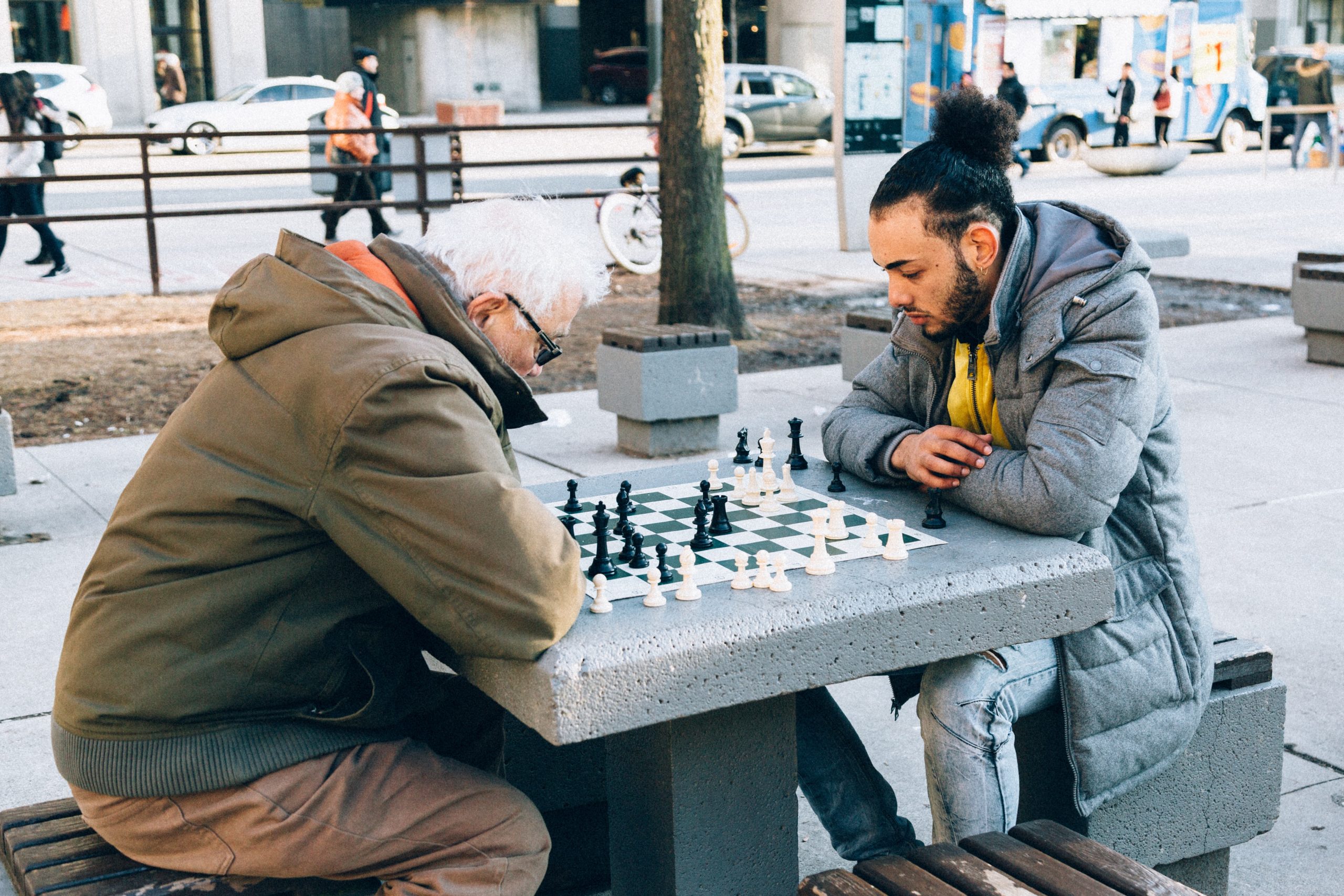
This article is written by Lindsay M. Miller is a National Civic League Senior Fellow and ELGL COVID-19 Equity Ambassador. Lindsay wrote this article as part of the Equity Ambassadors Cohort. You can find all the articles for this cohort here. This article originally appeared on the National Civic Review.
During the first few months of 2020, the world watched anxiously as a new virus took hold of Wuhan, China, and began to spread throughout the rest of the country, Europe, and then the world. The first known U.S. cases of the coronavirus – a novel virus that causes the disease COVID-19 – were identified toward the end of January. By March, more than 60 percent of the U.S.’s coronavirus deaths at the time were linked to one residential care facility in Washington state.1 By May, more than one third of all coronavirus deaths in the U.S. were related to residential care facilities for older adults.
It has become clear that the risk for mortality or complications from COVID-19 is strongly correlated with age. More than 90 percent of the people who have reportedly died of COVID-19 in Europe were over age 60. Further, in the United States, the fatality rate for COVID-19 is highest in people over 85, followed by people ages 65 to 84.2 The risk factors associated with age may be due, in part, to the likelihood of developing other chronic conditions as we age.
Addressing the needs of aging populations and ensuring that older adults can mentally, emotionally, and physically thrive has been a focus of many communities throughout the United States. With tools like the World Health Organization’s Age-Friendly Cities Guide, published in 2007, and AARP’s Network of Age-Friendly Communities, municipalities throughout the country have access to a multitude of resources to become more “age-friendly.” Such guides give communities tools to ensure that things like the built environment, transportation, and community health services are mindfully crafted to meet the needs of older adults. And many communities have been successful in crafting age-friendly programs and policies.
Yet, the coronavirus pandemic presents a new challenge for municipalities who wish to become more age-friendly. The pandemic has taken an alarming toll on older adults, and the preliminary findings suggest that it has harmed older adults inequitably, with low-income older adults and older adults of color disproportionately affected by both the virus and its economic repercussions. There is also evidence that the pandemic is exacerbating ageism within communities, causing a greater rift between generations and increased the threat of social isolation faced by many older adults.
Older Adults Are Not a Monolithic Group
The preliminary data from the pandemic shows what many of us already know, yet few age-friendly policies acknowledge: older adults are not a monolithic group. Older adults are diverse in many ways, including race, ethnicity, socioeconomic status, disability, sexual orientation, and gender identity. They differ in life experiences, cultural backgrounds, genetics, and health histories. Because of this, older adults are affected differently by the virus and will inequitably feel its economic repercussions.
Notably, the coronavirus itself has affected Black, Latino, and White communities differently, with a disproportionate number of infections and deaths among Blacks and Latinos. For instance, in New York, Black and Latino city residents have died from COVID-19 at twice the rate of Whites or Asians. The zip codes in the bottom 25 percent of average incomes represent 36 percent of all cases of the disease while the wealthiest zip codes account for under 10 percent.3
For many older adults, racial or ethnic discrimination is compounded by age when it comes to COVID-19.4 Many older immigrant adults for whom English is their second language often struggle to access critical public health information in their native languages.5 And Black and Latino older adults are more likely to live in multi-generational households, act as caregivers to other family members, take public transportation, and live in dense, urban neighborhoods – all factors that increase the likelihood of contracting COVID-19.6
The economic fallout of the pandemic will also affect older adults differently. According to the AARP Public Policy Institute, 51 percent of Americans over age 50 have no emergency savings account, making an unexpected economic downturn harder for these older adults to rebound from. Further, Black and Latino or Hispanic adults, as well as women, tend to have higher rates of economic insecurity than White adults and men. According to the National Council on Aging, the financial hardships created by the coronavirus pandemic will push between 1.4 and 2.1 million older Americans into poverty, and older adults with the least wealth will be hit the hardest.7
It is imperative that age-friendly initiatives – during and after the pandemic – reflect differences in identity, income, and circumstances among older adults. Health and economic disparities among older adults, exacerbated by the pandemic, cannot be mitigated unless policies and programs take race, ethnicity, income, gender, and other factors into account.
Ageism and Intergenerational Divisions on the Rise
The coronavirus pandemic has also revealed, and in some ways exacerbated, the ageism that already existed in many communities. Municipalities conducting age-friendly work, or simply working to recover after the pandemic, should prepare to engage and counter such attitudes.
Since the start of the pandemic, public debates related to the virus, healthcare, or the economy have often insinuated that older adults are “disposable” or represent “reasonable sacrifices” for the common good. The Human Rights Watch notes multiple incidents of public officials invoking ageism in responses to COVID-19, including Ukraine’s former health minister stating that people over 65 are “already corpses” and the Texas lieutenant governor, Dan Patrick, suggesting that older people might be willing to sacrifice themselves to benefit the economy.8
Further, many of the strides communities have made to strengthen intergenerational bonds and decrease social isolation among older people may be threatened due to the coronavirus. For instance, current discourse that suggests “walling off the old” to stop the spread of COVID-19 may reinforce our already age-divided societies. While social distancing and “staying home” may be needed to curb the spread of the virus, many older people may find themselves unexpectedly alone, putting them at higher risk for adverse mental health conditions, depression, or cognitive decline.
decrease social isolation among older people may be threatened due to the coronavirus. For instance, current discourse that suggests “walling off the old” to stop the spread of COVID-19 may reinforce our already age-divided societies. While social distancing and “staying home” may be needed to curb the spread of the virus, many older people may find themselves unexpectedly alone, putting them at higher risk for adverse mental health conditions, depression, or cognitive decline.
Policymakers working to mitigate the pandemic’s devastating toll on older adults will face added pressure in communities where ageism has become more commonplace. Cities should be proactive in developing programs to increase dialogue between generations, thinking creatively during times of social distancing and beyond. After all, we can only mitigate ageism when we can increase interactions, and thus understanding, between people of different generations.
What Policymakers Can Do
Some governments have developed innovative solutions for addressing the challenges raised by COVID-19. For example, Louisiana Governor John Bel Edwards created a Healthy Equity Task Force to address the racial and economic disparities in COVID-19 outcomes. One long-term goal of the task force is to improve access to fresh foods for people living in food deserts since diet-related health problems such as hypertension, diabetes, and obesity are associated with complications from COVID-19.9
Virginia has also instituted a health equity task force with a pilot program to be rolled out in the City of Richmond. The Health Equity Leadership Task Force will use data to prioritize areas experiencing disproportionate impacts from the coronavirus and increase access to personal protective equipment for these underserved communities.10 The City of Chicago will also increase funding for immigrant welcoming centers and assist undocumented immigrants in applying for Medicaid, a population that has been left out of federal aid packages.11

To counter social isolation among older adults, the City of Columbus, Ohio, created the Friendly Phone Line and “Necessity Bags” programs. The Friendly Phone Line includes students, staff, and faculty volunteers from The Ohio State University College of Social Work who speak on the phone with older adults within the community, giving older adults opportunities to socialize and get their questions answered about COVID-19. For the “Necessity Bags” project, city officials, community partners, and Age-Friendly network volunteers distribute three to five days’ worth of shelf-stable food as well as personal care items such as soap, shampoo, and toilet paper to older adults who may not be able to leave their homes due to social distancing.
Moving Forward
Over the past couple of decades, many cities have been working diligently to become more age-friendly. Using guidance from the World Health Organization’s Global Age-Friendly Cities Guide or local assistance from AARP, municipalities are instituting policies and programs related to transportation, housing, social participation, social inclusion, health services, and infrastructure to improve the lives of older adults.
Though the pandemic represents a unique challenge to local communities, it also represents an opportunity. Like all successful initiatives, policies targeting older adults need to utilize a strong equity lens to ensure that policies connect with and serve older adults that are most in need. They should also work to meet older adults where they are, reaffirm their value in an ageist society, and create long-term, sustainable solutions that put older adults themselves in the driver’s seat.
1 Secon, Holly. “More than 60 percent of coronavirus deaths are linked to a Washington nursing home.” Business Insider. March 11, 2020.
2 Human Rights Watch. “Rights risks to older people in COVID-19 response.” April 7, 2020. https://www.hrw.org/news/2020/04/07/rights-risks-older-people-covid-19-response.
3 Kieffer, Elana. “Beyond age, race, and income: Sociodemographic factors to track during COVID-19.” National Council on Aging Blog. https://www.ncoa.org/topic/public-policy-action/.
4 American Pyschological Association. “Ageism and COVID-19.” https://www.apa.org/topics/covid-19/research-ageism.
5 Elana Kieffer. “Beyond age, race, and income: Sociodemographic factors to track during COVID-19.” National Council on Aging Blog. https://www.ncoa.org/topic/public-policy-action/.
6 Centers for Disease Control and Prevention. “Health Equity Considerations and Racial and Ethnic Minority Groups.” https://www.cdc.gov/coronavirus/2019-ncov/community/health-equity/race-ethnicity.html
7 Trull, Armando. “COVID-19 pandemic will impoverish millions of aging Americans.” National Council on Aging. https://www.ncoa.org/uncategorized/covid-19-pandemic-will-impoverish-millions-of-aging-americans/
8 Human Rights Watch. “Rights risks to older people in COVID-19 response.” April 7, 2020. https://www.hrw.org/news/2020/04/07/rights-risks-older-people-covid-19-response.
9 Office of the Governor of Louisiana. “Gov. Edwards announces funding to the health equity task force to examine causes and solutions to COVID-19.” April 24, 2020. https://gov.louisiana.gov/index.cfm/newsroom/detail/2473.
10 Pace, Bailey. “Governor Northam announces health equity pilot program with City of Richmond.” WVVA.com. May 11, 2020. https://wvva.com/2020/05/11/governor-northam-announces-health-equity-pilot-program-with-city-of-richmond/.
11 Hanania, Ray. “Legislature passes budget to help victims of COVID-19.” Suburban Chicagoland. June 17, 2020. https://suburbanchicagoland.com/2020/05/24/legislature-passes-budget-to-help-victims-of-covid-19/.
